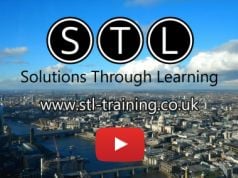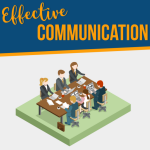98.7% Of all customers recommend us, we're so confident about our results we publish all reviews and stats
View Live Stats View Reviews
 Effective Communication Training London
Effective Communication Training London
London and UK wide
Face to face / Virtual public schedule & onsite training. Restaurant lunch included at STL venues.
| (436 reviews, see all 96,137 testimonials) |
From £446 List price £650
- 1 day Instructor-led workshop
- Courses never cancelled
- Restaurant lunch
Syllabus
Who is this course for?
This course is suitable for anyone who needs to enhance their relationship with others, and present clear, positive messages in the workplace. Both appropriate for corporate communication training as well for use in personal situations.
You may also wish to consider a Microsoft Word course.

Benefits
At the end of this 1 day workshop, delegates will have gained the skills necessary to communicate clearly and confidently, achieve objectives through effective communication, persuade and influence, and improve workplace relationships.Course Syllabus
Communication Styles
Communication styles model
Identifying preferred styles
Adapting a style as required
Successful Communication Essentials
3 P's: Professional, Polite, Positive
Identifying and overcoming barriers to communication
Characteristics of an excellent communicator
Unspoken Communication
Active listening
Body language, tone
Building rapport
Positive Image
Meetings: making an impact
Dealing with challenging situations
Ensuring your message is perceived as intended
Phrasing your message appropriately
Personal Excellence
Assertiveness
Persuasion skills
Prices & Dates
What you get
"What do I get on the day?"
Arguably, the most experienced and highest motivated trainers.
Face-to-face training
Training is held in our modern, comfortable, air-conditioned suites.
Lunch, breaks and timing
A hot lunch is provided at local restaurants near our venues:
- Bloomsbury
- Limehouse
Courses start at 9:30am.
Please aim to be with us for 9:15am.
Browse the sample menus and view joining information (how to get to our venues).
Refreshments
Available throughout the day:
- Hot beverages
- Clean, filtered water
- Biscuits
Virtual training
Regular breaks throughout the day.
Learning tools
In-course handbook
Contains unit objectives, exercises and space to write notes
24 months access to trainers
Your questions answered on our support forum.
Training formats & Services
Training Formats & Services
|
Testimonials
Wine & Spirit Education Trust
Chloe Challis,
Quality Assurance Assistant
I cannot fault the training today. It was an enjoyable and informative course delivered with enthusiasm and great care for the audience. A great balance between learning and active participation.
Effective Communication Skills
Visas & Citizenship, UK Visas and Immigration
Wordran Wilson,
AODM
Very clear, concise and assertive trainer.
Effective Communication Skills
Newmarket Strategy
Edward Irven,
Consultant
The effective communications course run by Tony B was extremely comprehensive, interactive and informative. I will definitely be working on using the tips and advice in my work and personal life.
Effective Communication Skills
This training course can also be referred to as a business communication course and covers aspects of corporate communication training courses to help with training effective communication fundamentals. See our reviews for why these are some of the best communication courses around!
Learning & Development Resources
Soft Skills Blog
- Improve your communication skills with these 7 tips
- Effective Communication: Having Difficult Conversations
- Effective Communication – Making an Impact in Meetings
- The Importance of Effective Communication Skills
- Effective communication – Listening skills
Infographics
Training manual sample
Below are some extracts from our Effective Communication Skills manual.
Effective Communication Skills
Level and Type of Listening
1. Passive/not listening
- noise in the background, ignoring
2. Pretend listening
- also called responsive listening', using stock nods and smiles and of course, etc.
3. Biased/projective listening
- 'selective listening' and dismissing the other person's views
4. Misunderstood listening
- unconsciously overlaying your own interpretations and making things fit when they don't
5. Attentive listening
– personally, driven fact gathering and analysis often with manipulation of the other person
6. Active listening
- understanding feelings and gathering facts for largely selfish purposes
7. Empathic listening
-understanding and checking facts and feelings, usually to the listener's personal agenda
8. Facilitative listening
- listening, understanding fully, and helping, with the other person's needs uppermost
Conflict Management Steps
1. Reflect on the situation
2. What type of conflict is it?
3. Facts, Process, Purpose, Values
4. What personality types are those involved?
5. What is your natural response to the conflict?
6. Avoid, Accommodate, Compete, Compromise, Collaborate
7. Is this the best way? What might work better?
Step 1- Everyone Tells It Like They See It
- Ask questions to draw out the other’s side of the conflict
- Set ground rules
- Listen without judging and avoid interrupting or blaming
- Take notes
- Paraphrase what they have said before saying your version
Step 2 - Everything Is Put On the Table
- Share your understanding of the conflict
- Present your case by using “I” statements
- Get to the point and focus on the issue, not on personalities, accusations or past encounters
- Include feelings, facts and perspectives
Step 3 - Focus on the Future
- Ask for a commitment to working out a solution
- Create a mutual action plan
- Avoid all talk and no action
- Get an agreement in specifics
- Follow through – do what you said you’d do
- Schedule an evaluation meeting
Technique for resolving conflict
- Set a time to talk and state your intentions and outcome
- State what led to the conflict and your feelings
- Explore all relevant information: facts, interpretations, feelings
- Repeat your colleague’s view of the event
- Explore solutions that would satisfy both of you
- Test your agreement and commitment
VAK Learning Styles Explanation
The VAK learning styles model suggests that most people can be divided into one of three preferred styles of learning. These three styles are as follows, (and there is no right or wrong learning style):
§ Someone with a Visual learning style has a preference for seen or observed things, including pictures, diagrams, demonstrations, displays, handouts, films, flip-chart, etc. These people will use phrases such as ‘show me’, ‘let’s have a look at that’ and will be best able to perform a new task after reading the instructions or watching someone else do it first. These are the people who will work from lists and written directions and instructions.
§ Someone with an Auditory learning style has a preference for the transfer of information through listening: to the spoken word, of self or others, of sounds and noises. These people will use phrases such as ‘tell me’, ‘let’s talk it over’ and will be best able to perform a new task after listening to instructions from an expert. These are the people who are happy being given spoken instructions over the telephone, and can remember all the words to songs that they hear!
§ Someone with a Kinaesthetic learning style has a preference for physical experience - touching, feeling, holding, doing practical hands-on experiences. These people will use phrases such as ‘let me try’, 'how do you feel?' and will be best able to perform a new task by going ahead and trying it out, learning as they go. These are the people who like to experiment, hands-on, and never look at the instructions first!
People commonly have a main preferred learning style, but this will be part of a blend of all three. Some people have a very strong preference; other people have a more even mixture of two or less commonly, three styles.
NLP – Neuro Linguistic Programming
NLP started as an idea by Richard Bandler and coordinated with John Grinder into a field for Modelling Behavioural Excellence. A mind-body link is a fundamental part of NLP. People tend to show their thinking strategies by moving their eyes and how we can use this to power up our communication.
Signals and their Possible Meanings:
Looking right (generally) - creating, fabricating, guessing, lying, storytelling
Creating here is basically making things up and saying them. Depending on context this can indicate lying, Looking right and down indicates accessing feelings, or not, depending on the context
Looking left (generally) - recalling, remembering, retrieving 'facts'
Recalling and then stating 'facts' from memory in an appropriate context often equates to telling the truth. Left downward looking indicates silent self-conversation or self-talk, typically in trying to arrive at a view or decision.
Looking right and up - visual imagining, fabrication, lying
Related to the imagination and creative (right-side) parts of the brain, this upwards right eye movement can be a warning sign of fabrication if a person is supposed to be recalling and stating facts.
Looking right sideways - imagining sounds
Sideways eye movements are believed to indicate imagining (right) or recalling (left) sounds, which can what another person has said or could say
Looking right and down - accessing feelings
This is a creative signal but not a fabrication - it can signal that the person is self-questioning their feelings about something
Looking left and up - recalling images truthfulness
Related to accessing memory in the brain, rather than creating or imagining. A reassuring sign if signalled when the person is recalling and stating facts
Looking left sideways - recalling or remembering sounds
Looking sideways suggests sounds; looking left suggests recalling or remembering. This, therefore, could indicate recalling what has been said by another person
Looking left down - self-talking, rationalising
Thinking things through by self-talk - concerning an outward view, rather than the inward feelings view indicated by downward right looking
Thanks. Your download will begin shortly.
Please help us
Share or create a link to this manual today!
Just follow these simple instructions...









